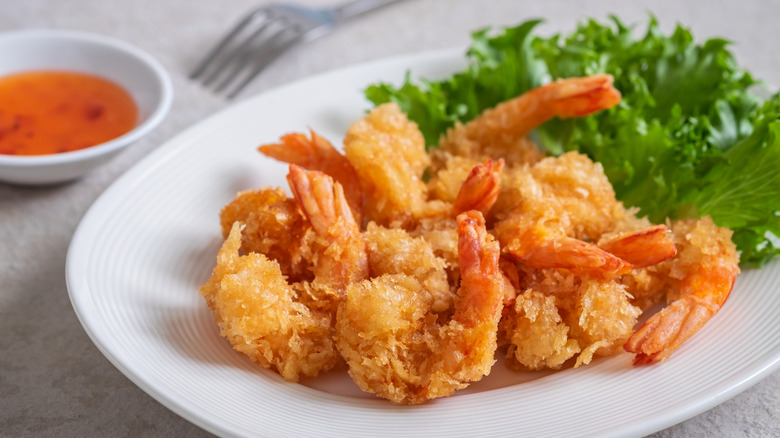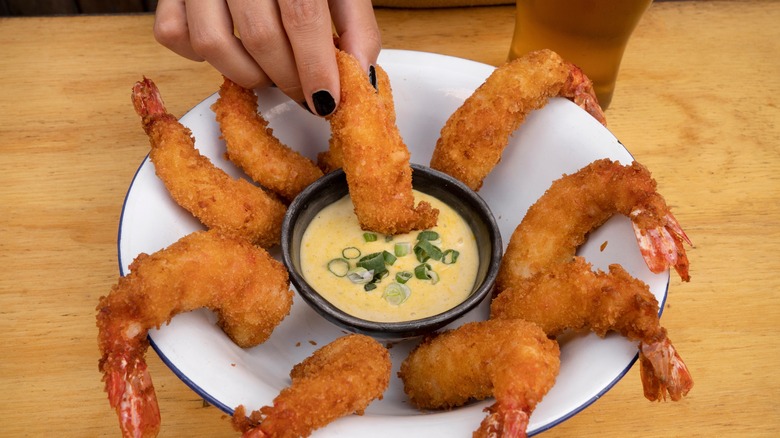The Mistake To Avoid When Buying Frozen Shrimp If You Plan To Fry Them
Plump, juicy, and ready when you are, frozen shrimp are perfect for all kinds of dishes, but they are especially ideal for frying. When fresh, this type of seafood begins to lose its texture and flavor after just 24 hours, so, unless you live on the coast, you're already buying previously frozen shrimp when you purchase it from the grocery store. This means buying frozen shrimp is the best policy. Most of the frozen versions packaged for grocery stores are processed with a method called IQF. It stands for "individually quick frozen" and it keeps shrimp super fresh and delicious by freezing each piece without letting large ice crystals form.
But you can buy two types of these frozen crustaceans and one is better than the other for breading, frying, and eating. Frozen shrimp with the tails on is the way to go here. It may seem like a small thing, but it's important because keeping the tails on makes the preparation process easier.
Shrimp are small by nature and they're not easy to pick up individually with tongs or a fork, generally leaving your hands messy. The solution is to grab them by that handy firm tail. Then you can sink each shrimp right into the seasoned flour, egg wash, and coating, all while keeping your hands clean. This makes sense whether you're buying frozen cooked, or frozen raw shrimp and features on our handy list of common mistakes to avoid when using frozen cooked shrimp.
More reasons to leave shrimp tails on
Not breading your hands when frying anything is key, but that's not the only reason why you should buy shrimp with the tails attached. The tail is its own utensil, both for frying the crustaceans and for eating them. It's good etiquette, too. When you see the tail on a fried shrimp served at a party, it's a signal to eat them with your hands. Don't forget to hold them by the tail before dunking them in something super yummy, like this zesty remoulade sauce recipe. Or our homemade sweet and sour sauce, which will taste divine with your fried seafood as an appetizer.
The tail is also a part of the shrimp's anatomy that helps that tiny bit of meat inside it cook evenly. That's why you'll see the tails on them in other recipes besides frying them. An added benefit is that shrimp tails are full of calcium and fiber and an antioxidant called astaxanthin that is good for your heart (yes, you can eat the crunchy tails). Ultimately, they're both useful and nutritious and some even think they are more visually attractive on the plate too.

